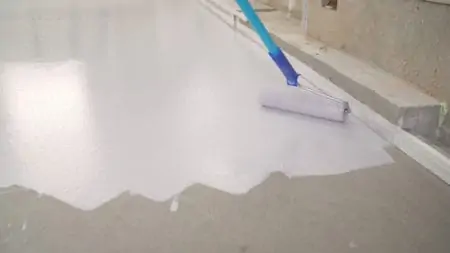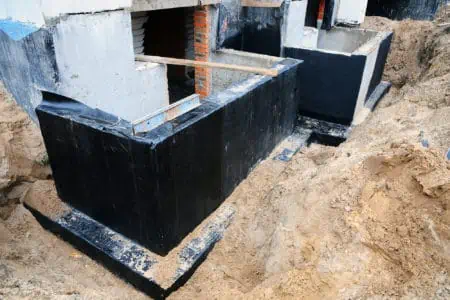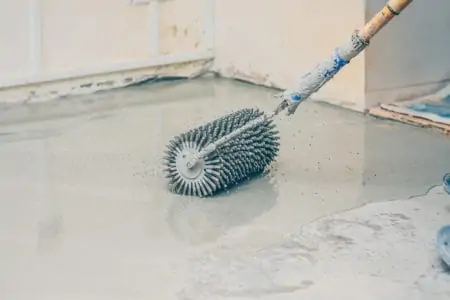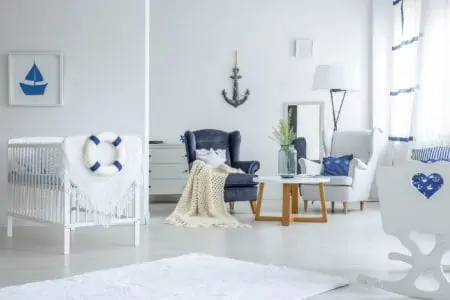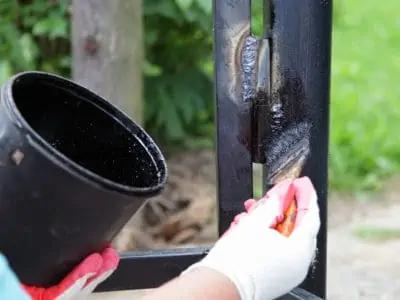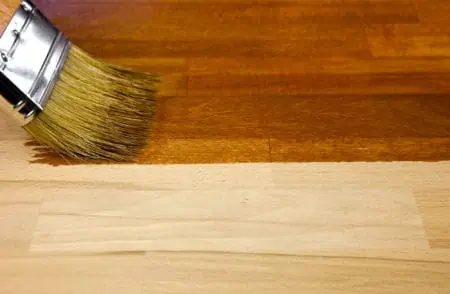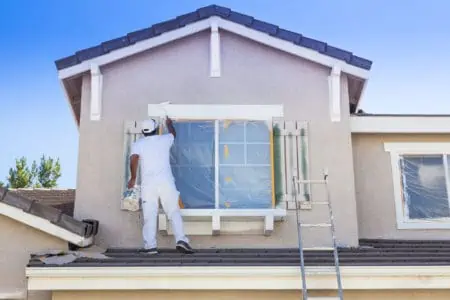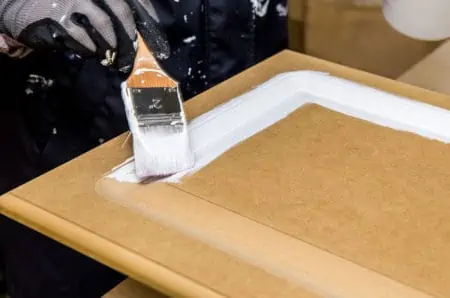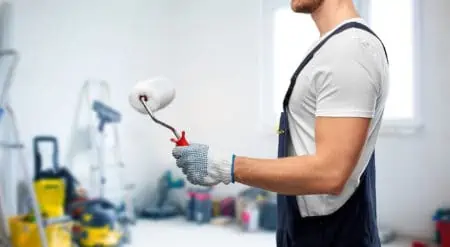Painting your basement floor is not just about making it look good. It’s about sealing it against water damage and protecting it against heavy footfall. Basements are below ground level, so they get a higher degree of dampness and water penetration.
We take a tour of the best basement floor paints, recommending our 5 favorite products and judging them on water resistance, coverage, and ease of application.
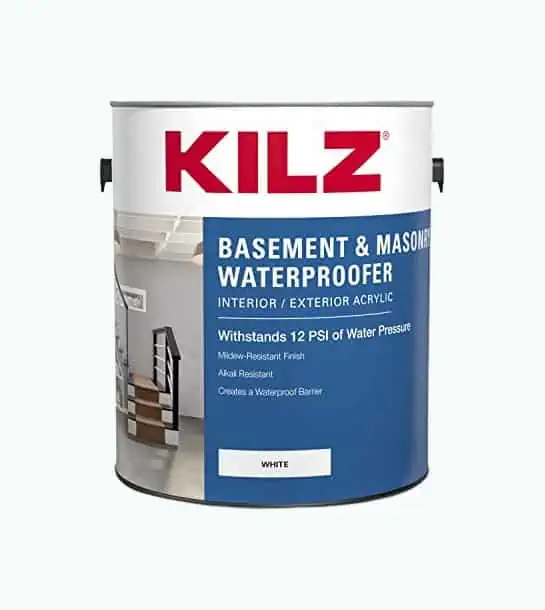
- Brush, roll, or spray it on
- Uses nanotechnology to create a hard seal
- Repels water to 12 PSI
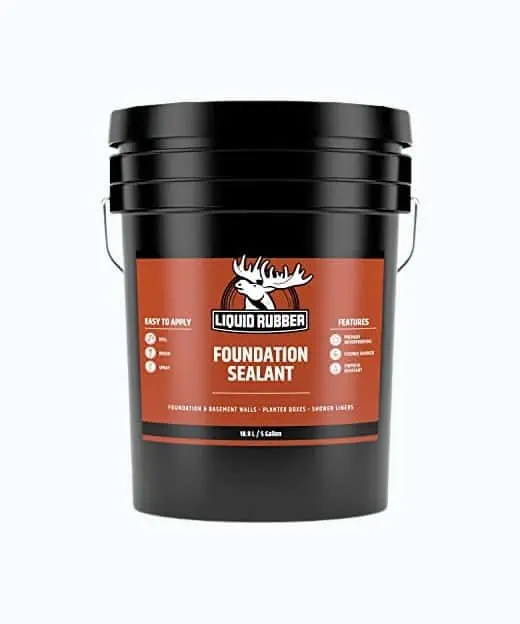
- Seals joints, seams, & gaps
- Water-based, low VOCs, & low odors
- Multi-purpose paint for many jobs
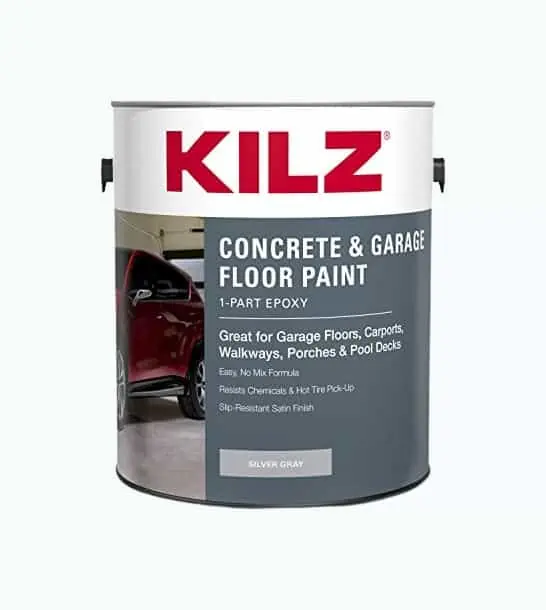
- Maximum of 500 sqft coverage per gal.
- Works on garages, basements, & untreated concrete
- Dries for recoats in 4 hours
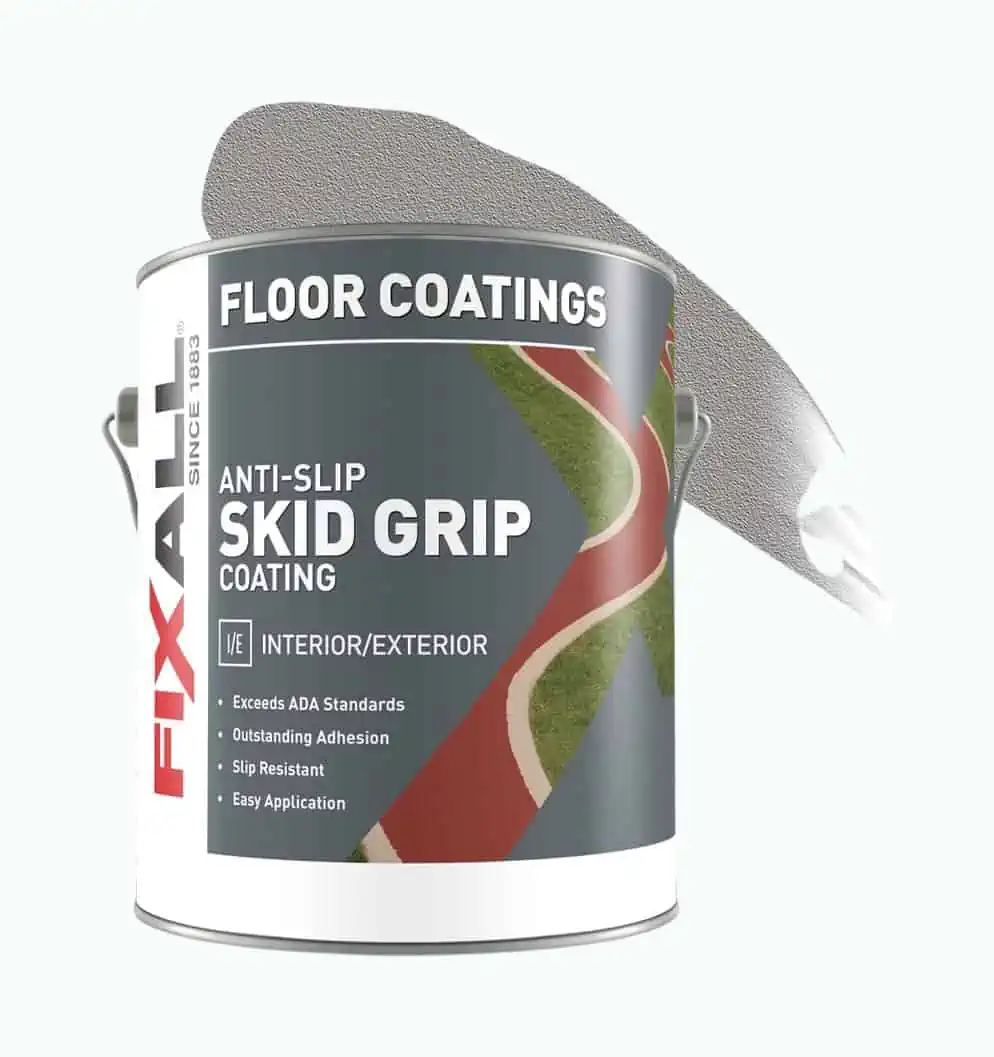
- Increases the grip on most surfaces
- Ada compliant
- 100% acrylic for easy cleanup
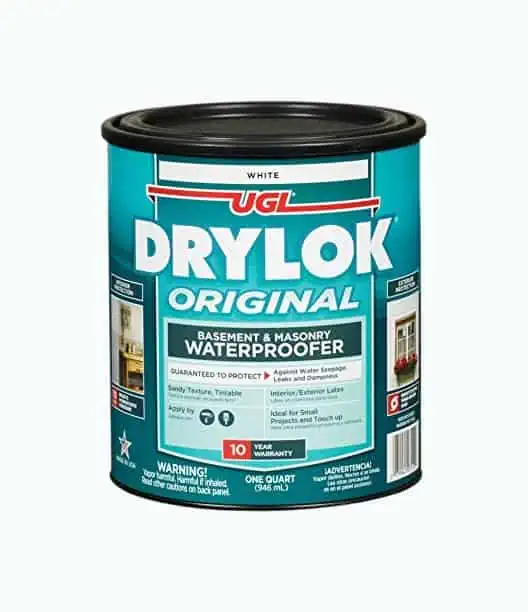
- 100% waterproof guaranteed
- Breathable to allow moisture to evaporate
- Prevents radon gas from escaping
Review Methodology: At Sensible Digs, we pride ourselves on our comprehensive analysis and hands-on experience with basement floor paints. Our professional team conducts thorough tests to benchmark performance, measure durability, and compare different products. Our evaluation criteria include adherence, drying time, finish quality, and resistance to damage. Our data-driven reviews provide a clear score for each paint, helping you make an informed decision. We delve into the design choices of each product, sharing insights on how these affect the end-user experience. From our assessments, we identify key factors such as coverage, ease of application, and value for money, providing you with the facts needed to choose the best basement floor paint for your needs. Experience the Sensible Digs difference today and trust our evidence-backed findings.
The Best Basement Floor Paints of 2024
With such a vast array of products to choose from, getting the 5 best basement paints was a challenge. Here are our favorites.
KILZ Interior/Exterior Basement Waterproofing Paint
Best Waterproof Basement Floor Paint
This KILZ is an external and internal paint, so when you are done coating the basement floor, you can touch up your patio too. Basements are damp environments, so this paint uses nanotechnology to form a solid barrier that repels water and stops alkali damage.
You get between 75 and 125 square feet of coverage, depending on the quality and porosity of the surface, and you need to apply a couple of coats, allowing 4 hours to dry between layers.
It is low odor and resistant to water up to 12 PSI; plus, it is mold and mildew-resistant. And because it is water-based, it is better for the environment thanks to the low VOCs, which emit low ozone as the paint dries. It also cleans with soap and water.
This paint can be brushed, rolled, and sprayed on, so it is easy to apply, and it’s also a great price.
On the downside, you cannot apply it on oil-based paints, and all mold stains must be removed entirely before painting it on. You should also avoid using this paint on floors with an active water leak.
Pros
- Brush, roll, or spray it on.
- Uses nanotechnology to create a hard seal.
- Repels water to 12 PSI.
- Use indoors and out.
Cons
- Not for use on oil-based products.
- Not suitable for floors with water leaks.
Product Specs
| Quantity | 1-gallon |
| Coverage | 75 to 125 square feet per gallon |
| Drying time | 4 hours |
| Type | Water-based |
| Applications | Spray, roll, and brush |
| Price | $$ |
Our Ratings
User Experience
Liquid Rubber Concrete Foundation and Basement Sealer
Best Liquid Rubber Basement Floor Paint
This liquid rubber paint is an excellent multi-purpose product that can seal basement floors, wooden fence posts, planter boxes, and metal and concrete.
It is environmentally friendly, thanks to its latex core ingredient, which is low VOC, contains zero solvents, and is low odor. That means it’s better for the environment and you because the health risks are reduced. It is also pet-safe and can be used indoors and out.
This product comes in 5-gallon tubs, so you should have plenty to get that basement floor done and enough left over for other concrete painting jobs. It fills gaps, coats joints and seams, and you can leave the leftover paint in the tub, and it won’t dry out.
The only downside is it only comes in black, which is a shame because basements are dark enough without painting your floor a dark color. Coverage is also meager at 50 square feet per gallon, and you need 3 coats to get full protection.
Pros
- Seals joints, seams, and gaps.
- Water-based, low VOCs, and low odors.
- Multi-purpose paint for many jobs.
- Comes in 5-gallon tubs for mass coverage.
Cons
- Only comes in black.
- Limited coverage at 50 square feet per gallon.
- Requires 3 coats for full protection.
Product Specs
| Quantity | 5-gallons |
| Coverage | 50 square feet per gallon |
| Drying time | 24 hours |
| Type | Water-based |
| Applications | Spray, roll, and brush |
| Price | $$$ |
Our Ratings
Personal Perspective
KILZ 1-Part Epoxy Acrylic Concrete Floor Paint
Best Epoxy Basement Floor Paint
When you need a bit more protection, try an epoxy paint like this KILZ. It isn’t a 2-part product that needs a hardener; it just has epoxy added to the mixture. This paint works on garages, basements, and untreated concrete floors.
You get 400 to 500 square feet of coverage on smooth surfaces and 200 to 200 square feet on porous and rougher floors. It is resistant to staining, tire burn, chemicals, oil, and gasoline, so it can withstand any punishment it gets on your basement floor.
It dries in 4 hours for a second coat, and the finish is gray satin. It is suitable for internal and external use, making it pretty versatile, and thanks to the slip resistance, it increases grip on patios and pathways.
The only negative is that you cannot use this paint on vertical surfaces, so if you want to paint your basement walls, you would need a different product.
Pros
- Maximum of 500 square feet coverage per gallon.
- Works on garages, basements, and untreated concrete.
- Dries for recoats in 4 hours.
- Suitable for internal and external use.
Cons
- Only suitable for horizontal surfaces.
Product Specs
| Quantity | 1-gallons |
| Coverage | Maximum 500 square feet per gallon |
| Drying time | 48 hours to cure |
| Type | Water-based |
| Applications | Spray, roll, and brush |
| Price | $$$$ |
Our Ratings
Community Feedback
FIXALL Skid Grip Anti-Slip Paint
Best Anti-Skid Basement Floor Paint
When you want to enhance the grip on your basement floor, this FIXALL paint could be the answer. It comes in 6 colors, from cobalt to smoke, and is ideal for areas with high traffic. It also works indoors and out, so you can focus on other parts of the house when you are done in the basement.
This paint is 100 percent acrylic, so it is kinder to the environment and washes clean with soap and water. Plus, it adheres to asphalt and almost every other solid surface.
It is fade-resistant, exceeds the ADA Americans with Disabilities Act requirements, and reduces oxidation, preventing cracking, peeling, and erosion of the concrete below. The only downside with this paint is it only has one use, making it an expensive option. You could just add sand to your leftover concrete paint and get the same non-slip surface.
Plus, because it has anti-slip qualities, the coverage is severely limited to just 50 to 80 square feet per gallon, so it could work out to be expensive if you have a large basement.
Pros
- Increases the grip on most surfaces.
- ADA compliant.
- 100 percent acrylic for easy cleanup.
- Safe for the environment.
Cons
- Only suitable as anti-slip paint.
- Limited coverage of just 50 to 80 square feet per gallon.
Product Specs
| Quantity | 1-gallon |
| Coverage | 50 to 80 square feet per gallon |
| Drying time | 24 hours to cure |
| Type | Water-based |
| Applications | Brush |
| Price | $$$ |
Our Ratings
First-Hand Impression
Drylok Latex Waterproof Floor Paint
Best Concrete Basement Floor Paint
We all know that basements are damp environments, thanks to their sub-floor positions, so keeping moisture at bay is the number one priority of any basement concrete paint. This Drylok does precisely that.
It withstands 10 PSI of water, which is the equivalent of a wall of water 22 feet high. They guarantee that their paint is up to the task. And the film it creates is breathable, so any moisture beneath the surface of the concrete can evaporate to leave it bone dry.
And this is the only paint to feature that actively reduces radon gas seepage by reducing vapor transfer. It also has non-slip qualities because it dries to a sandy texture, and because it is water-based, it is kinder to the environment and you.
The only negative is this paint comes in 1-quart tins, so it is only suitable for smaller basements, or you will need several cans to complete your task. Plus, it only covers 15 to 25 square feet, so you might need to buy some spare tins anyway.
Pros
- 100 percent waterproof guaranteed.
- Breathable to allow moisture to evaporate.
- Prevents radon gas from escaping.
- Water-based, so it’s better for the environment.
Cons
- Limited coverage of just 15 to 25 square feet per quart.
- Only comes in 1-quart tins for smaller projects.
Product Specs
| Quantity | 1-quart |
| Coverage | 15 to 25 square feet per quart |
| Drying time | Not stated |
| Type | Water-based |
| Applications | Brush |
| Price | $ |
Our Ratings
User Experience
| Product | Best | Quantity | Coverage | Drying time | Type | Applications | Price |
|---|---|---|---|---|---|---|---|
| KILZ Interior/Exterior Basement Waterproofing Paint | Best Waterproof | 1-gal. | 75 – 125 sqft per gal. | 4 hours | Water-based | Spray, roll, & brush | $$ |
| Liquid Rubber Concrete Foundation and Basement Sealer | Best Liquid Rubber | 5-gal. | 50 sqft per gal. | 24 hours | Water-based | Spray, roll, & brush | $$$ |
| KILZ 1-Part Epoxy Acrylic Concrete Floor Paint | Best Epoxy | 1-gal. | Maximum 500 sqft per gal. | 48 hours – cure | Water-based | Spray, roll, & brush | $$$$ |
| FIXALL Skid Grip Anti-Slip Paint | Best Anti-Skid | 1-gal. | 50 – 80 sqft per gal. | 24 hours – cure | Water-based | Brush | $$$ |
| Drylok Latex Waterproof Floor Paint | Best for Concrete | 1-quart | 15 – 25 sqft per quart | Not stated | Water-based | Brush | $ |
Is It Good To Paint Your Basement Floor?
Laying down a layer of protection on your basement floor enables it to last longer, protects it against water damage, and preserves it against heavy footfall. Basements are not like other concrete surfaces, they have a high moisture content because they are sub-ground level.
It also helps to stop cracking and lifting.
How To Choose the Best Basement Floor Paint
So, your basement floor is drab and in need of rejuvenating, but how do you decide on the right product? Is it coverage or ease of application, or do you want something that waterproofs? Let’s take a look at some vital factors.
Tips for Painting a Basement Concrete Floor
Painting a basement floor is a simple enough task. However, if you want the best results, there are some hints and tips you should follow.
Keep a Bucket of Water Handy
Most basement paint is water-based, so it should clean up with soap and water. Keep a bucket of water nearby to make it easier to remove splatters and spots where you have painted by mistake.
Score Along the Tape
After the paint has dried, you will need to remove the decorator’s tape. To prevent it from lifting the paint as you pull it away, grab a sharp knife and score along the inside edge.
Think Safety
Basements are poorly ventilated, so to avoid any detrimental effects on your health, wear a respirator to filter the fumes from the paint. Different paints have varying odor levels, but by being cautious, you are protected.
Think Texture
When laying down 2-part epoxy, it dries smooth like glass, so if you are concerned about grip, consider adding textured paint to increase the anti-slip capabilities of your floor.
Allow the Floor To Dry
Don’t be tempted to walk on your basement floor before allowing enough time for it to cure. This is important because some paints are recoat-dry within a few hours, but that doesn’t mean they have cured.
Curing happens when the paint layer has dried from top to the bottom, rather than just the topcoat being touch-dry.
